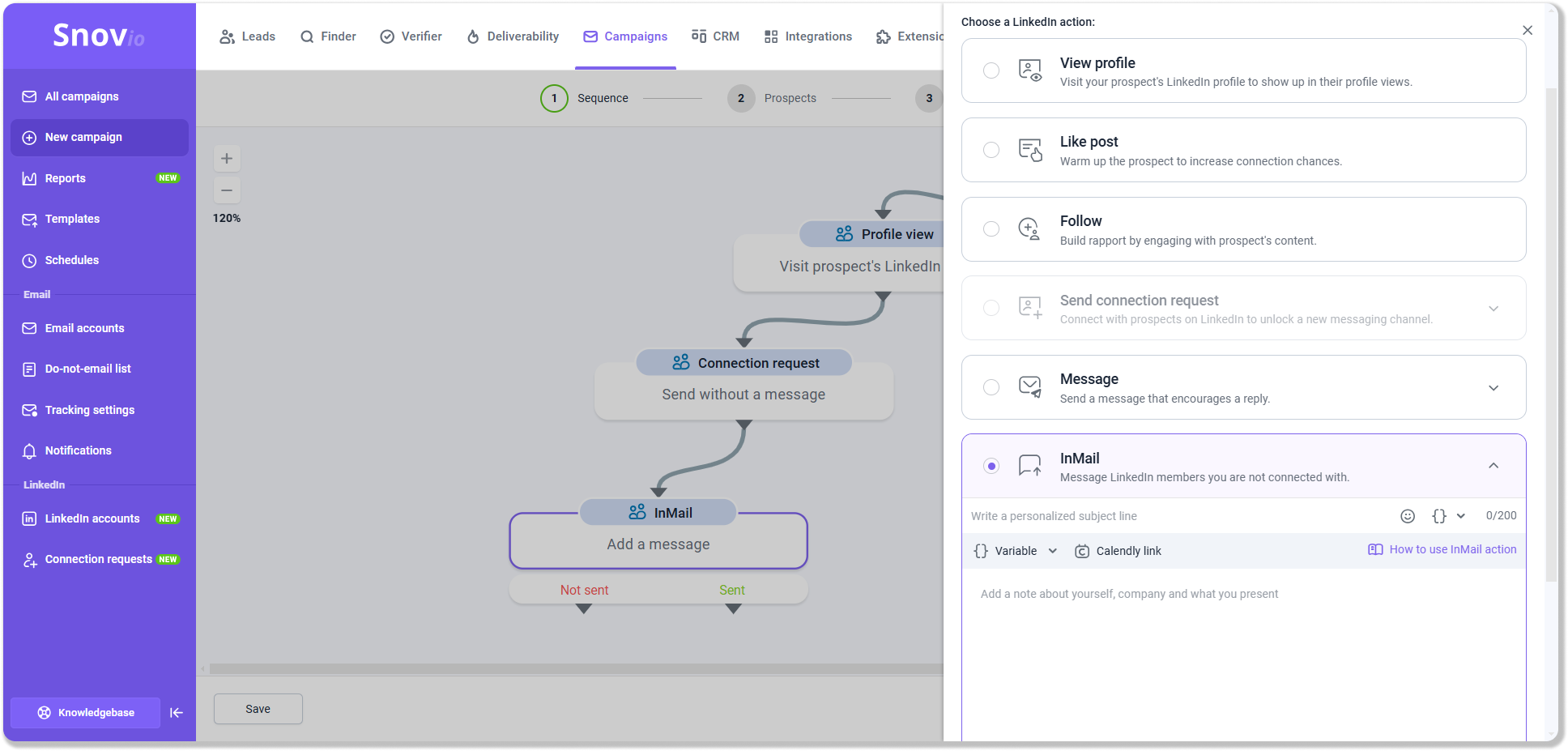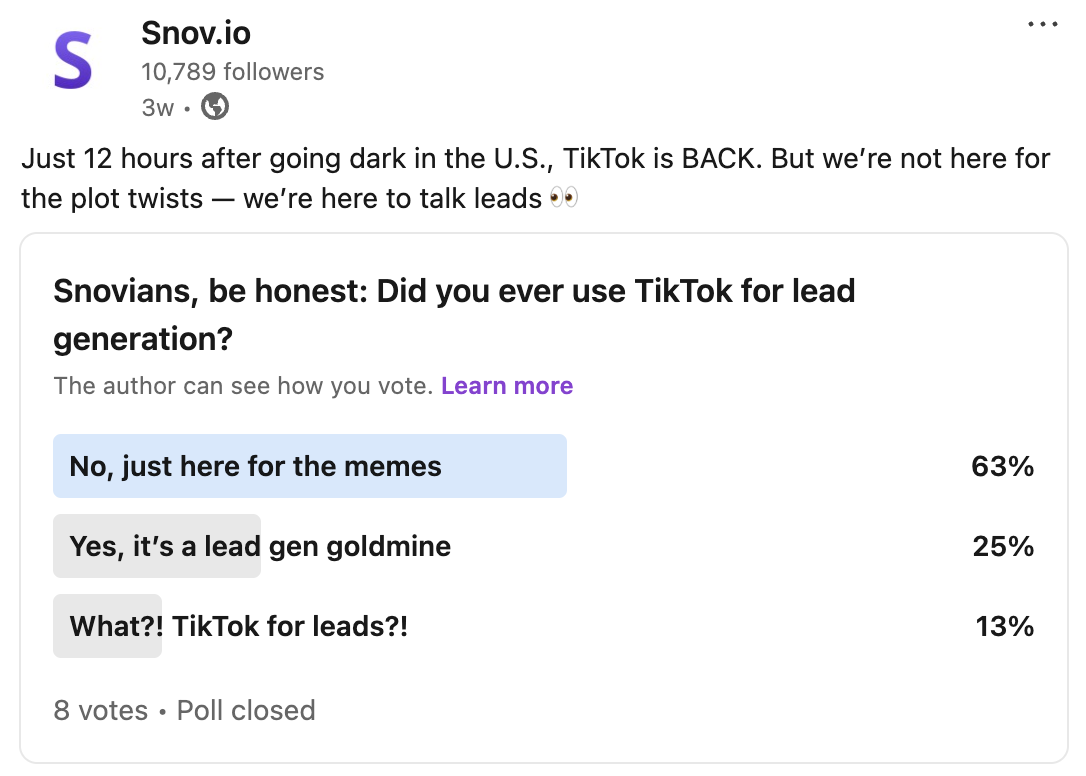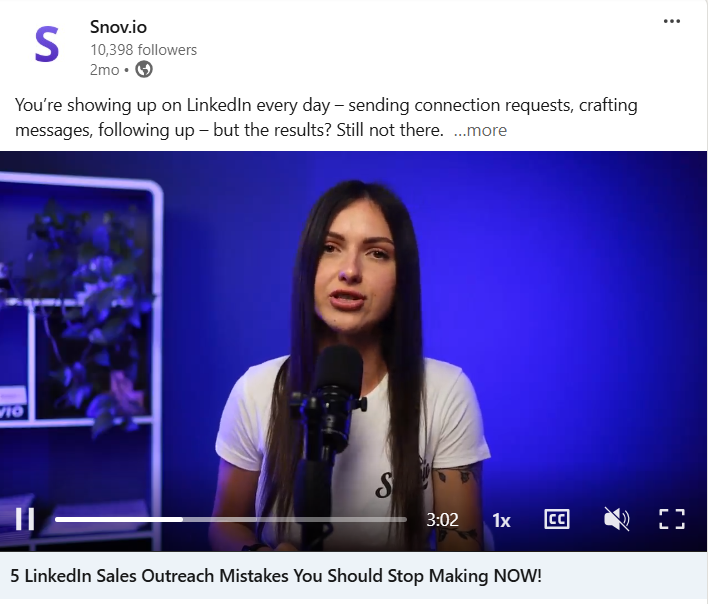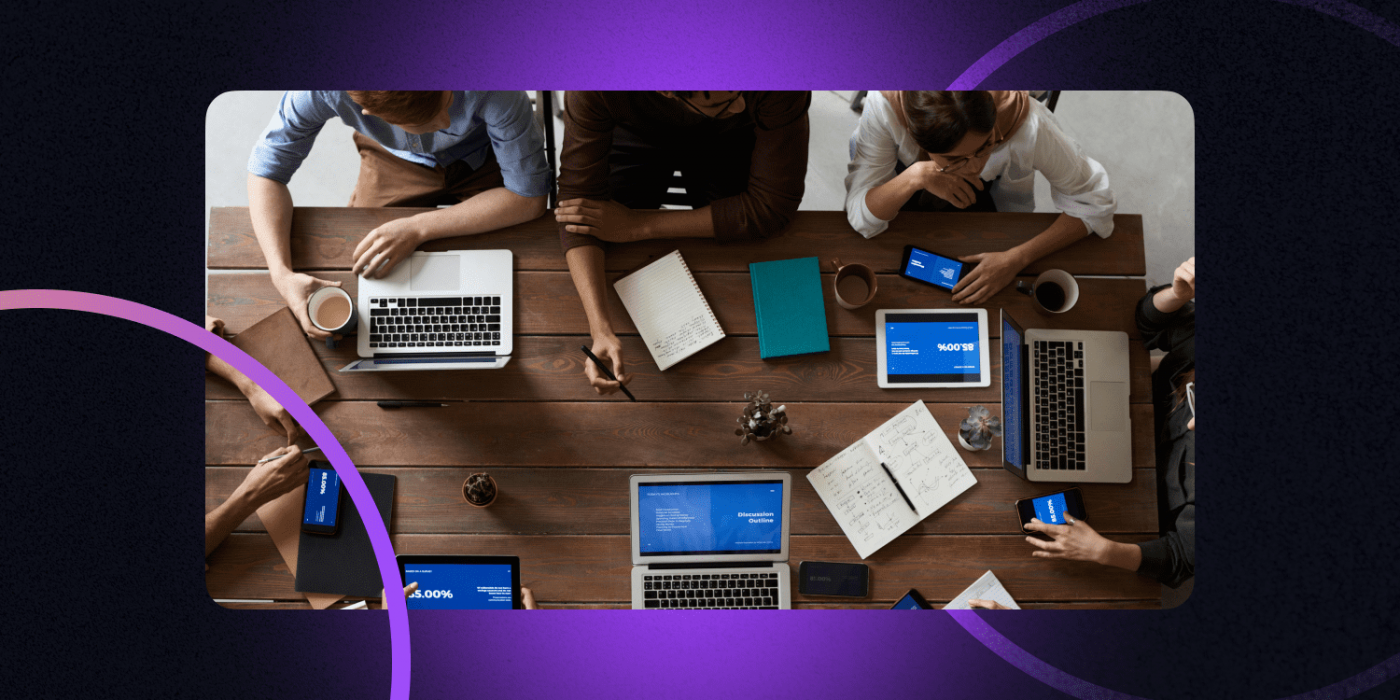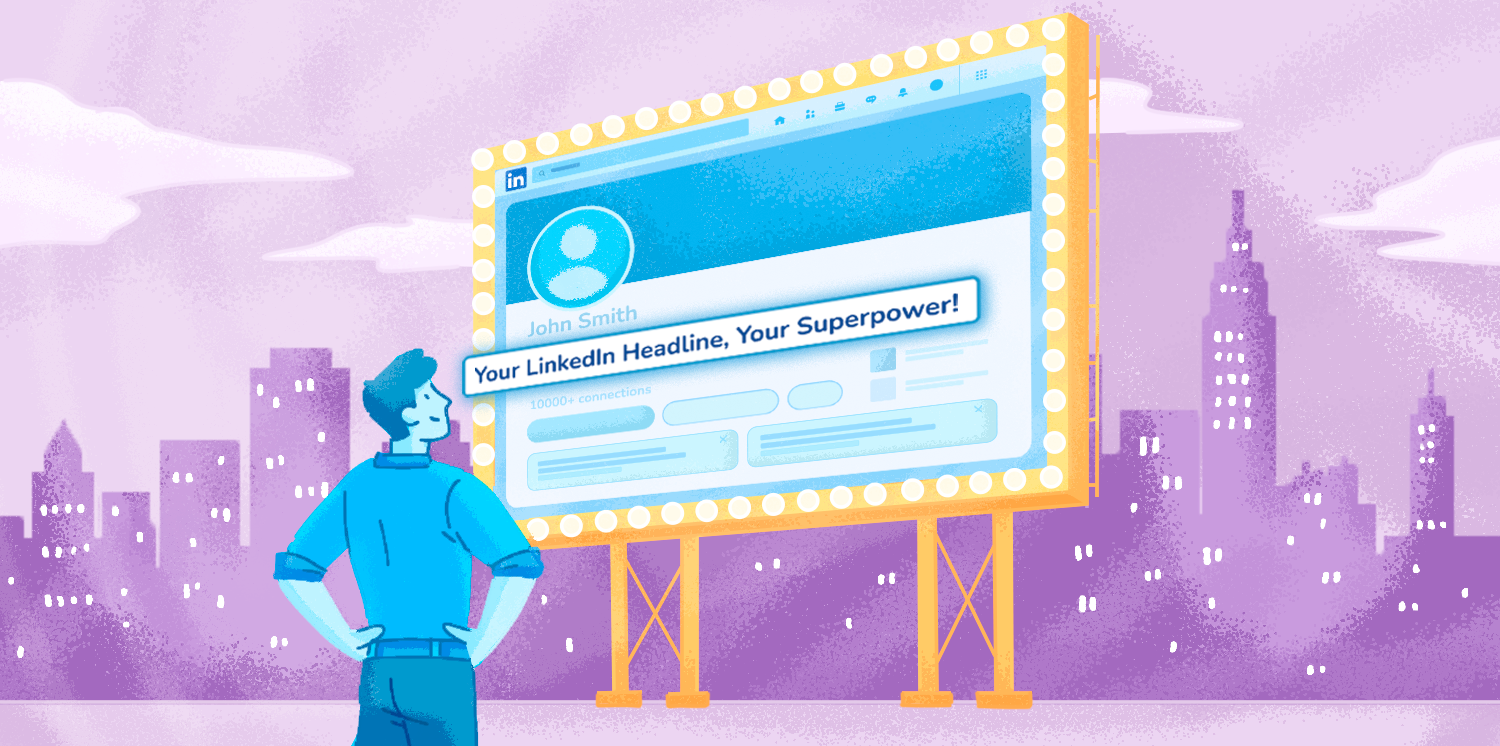Let’s be honest: creating a powerful LinkedIn content strategy is a unique art. It requires a combination of creativity and marketing professionalism to engage the right audience.
In this guide, you’ll find plenty of ideas on what and how to post on LinkedIn to reach your potential leads. As a bonus, I’ll share the types of posts that are in trend right now and those you’d better leave forgotten this year.
Ready to note down the basics of LinkedIn content marketing strategy?
Off we go!
Outline:
What is LinkedIn content marketing?
Before discussing a strategy for LinkedIn content creation, let’s start with the fundamentals: content marketing.
Content marketing is an approach that involves creating various types of content, marketing it through various channels, and growing the interested audience.
LinkedIn content marketing, in turn, is all the above but tailored specifically for LinkedIn, a platform positioned for professionals. To put it briefly, the goal of creating content for LinkedIn is driving business results. In particular, that’s about generating leads, building brand authority, nurturing professional relationships, and successfully selling your product or service.
Why you need a LinkedIn content marketing strategy
According to recent statistics, LinkedIn has over 1 billion members worldwide, with 63 million identified as decision-makers and 10 million as C-level executives. These are founders, CEOs, directors, and managers. This concentration of key business figures makes LinkedIn an incredible content marketing platform that aims to drive business results.
By effectively marketing their content, LinkedIn users have all chances to:
- Build authority. Consistently sharing expert posts on LinkedIn may make you or your brand a real thought leader in your industry.
- Grow visibility and reach. By posting something that resonates with your audience, you may increase your organic traffic.
- Establish your presence cost-effectively. You don’t necessarily need paid ads to boost your growth on LinkedIn. With the right strategy in place, organic content marketing may bring fascinating results.
- Increase networking opportunities. High-quality postings may draw the attention of decision-makers or influencers, who’ll be eager to engage with you.
- Drive lead generation. The more people love what you post, the more likely they will become interested in your product or service.
Best practices of LinkedIn content creation in 2025
Even the best LinkedIn content strategy won’t work unless the right people see your posts, especially in B2B. In this chapter, we’ll focus on advanced techniques for creating and promoting your content aimed at driving real results.
How to create a powerful LinkedIn content strategy:
- Align your content marketing strategy with your target audience
- Warm up your potential readers and viewers
- Diversity content types
- Focus on exclusiveness and expertise
- Use hashtags
- Avoid sensitive topics
- Optimize posting times
- Use various ways for content distribution
1. Align your content marketing strategy with your target audience
You can’t just post any content that seems good enough to you. Whatever you share on LinkedIn should be targeted to your audience, their needs, and goals. The first thing to do is to define the demographics of your ideal LinkedIn connections, namely their:
- industry
- company
- job position
- location, etc.
Next, research your target audience to understand their pain points and challenges. This knowledge will help you create posts that meet their needs.
Communication on LinkedIn is all about building lasting relationships. So don’t be a stranger. Get to know your audience and let your content speak directly to their needs. Focus on their pain points and offer real value—they’ll surely stick around for more.
PR and Communications Manager at Snov.io
2. Warm up your potential readers and viewers
To make people anticipate your content, you first need to draw their attention to your persona. This requires some interactions that will help you position yourself as someone who is well-versed in the industry topics.
Visit their profiles, like, and comment on their posts, expressing your expert opinion on the subjects that matter to them most of all. Engage your most interested connections in meaningful conversations right in their chat. By sending them personalized messages or InMails, you’ll create a special bond only like-minded professionals would have.
|
💡 Expert note How do you automate your LinkedIn interactions? Well, it’s hardly possible to manually send messages to dozens or even hundreds of LinkedIn leads one by one. However, you can automate this tedious process using LinkedIn Automation tools. LinkedIn Automation software, for example, helps you to streamline the following:
The most important is that your communication with connections is absolutely safe. Snov.io cares about security, offering a dedicated IP to every account and adhering to smart limits. You don’t need to worry about getting your LinkedIn account restricted. |
3. Diversify content types
Your LinkedIn postings should appeal to various segments of your audience. Moreover, the platform prefers variety. So, try to use various posts: articles, videos, carousel posts, some professional humor, surveys, polls, etc.
Repurpose and refresh existing content to maximize its ROI. For example, a high-performing article can be turned into a video or infographic — visual content usually generates more views and impressions.
4. Focus on exclusiveness and expertise
Today, LinkedIn’s algorithms favor educational content aimed at providing users with useful and unique information. By sharing exclusive insights or knowledge, you can position yourself as a thought leader in your industry.
Post something people won’t find elsewhere—valuable case studies, actionable tips you’ve derived from your experience, etc. Authentic expertise helps you build trust and credibility, strengthening your professional image and attracting more high-quality connections.
|
Thank you for reading our blog! As a token of our appreciation, get our free guide on how to send LinkedIn connections. |
5. Use hashtags
People often use keywords to search for topics of interest on LinkedIn. Including industry-specific and trending hashtags # in your LinkedIn content will help it appear in those searches.
Here is how you can boost your content visibility with hashtags:
- Ensure hashtags directly relate to the content of your posts.
- Monitor the hashtags your target audience usually follows to include them in your posts.
- Combine broader (e.g., #Email Marketing) and more specific (e.g., #Cold Email Marketing Strategy) hashtags to target both audiences.
- Create specific hashtags for your brand to engage users to track your content.
- Use hashtags either at the end or in the middle of your posts. If you add them in the middle, ensure they flow naturally in the text.
- Don’t overload your posts with hashtags (limit yourself to 4-5 most relevant hashtags per post).
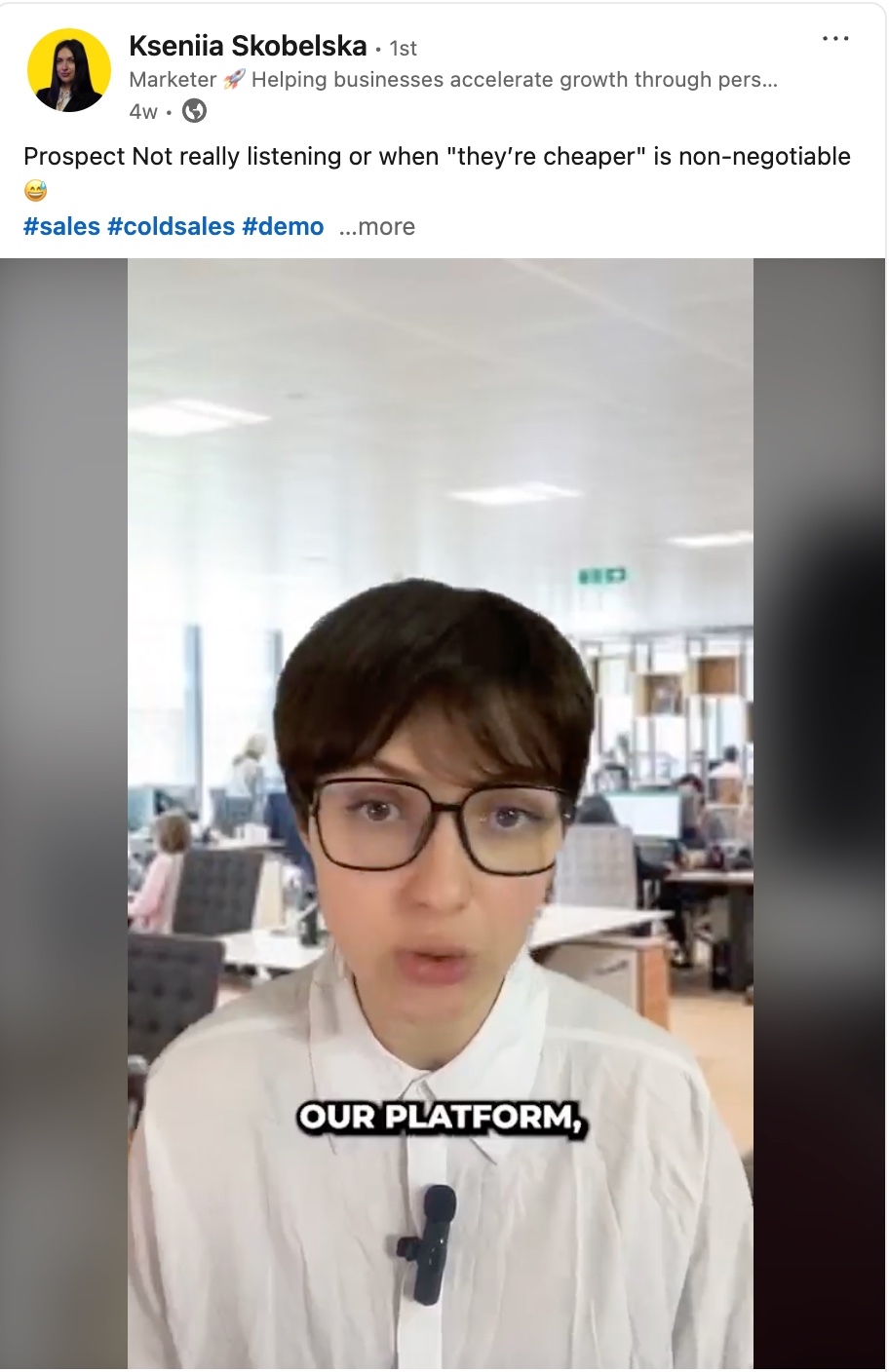
The post in this example also features a video. This helps draw attention to your content and possibly increase engagement and impressions.
6. Avoid sensitive topics
LinkedIn algorithms deprioritize controversial content that may harm some users, minimizing their reach. That’s why you should be very careful about choosing the topics for your posts.
Refrain from commenting on trending events unless you’re confident in your expertise or if this may cause polarized opinions. If your content starts attracting controversial or sensitive discussions, moderate or remove such threads. Instead, focus more on industry-related posts that align with the LinkedIn status of a professional network.
7. Optimize posting times
Research by Buffer shows that weekdays between 9 AM and 5 PM — prime working hours — yield the best engagement on LinkedIn. So, it would be wise to share content during this peak period (and note it in your LinkedIn content calendar).
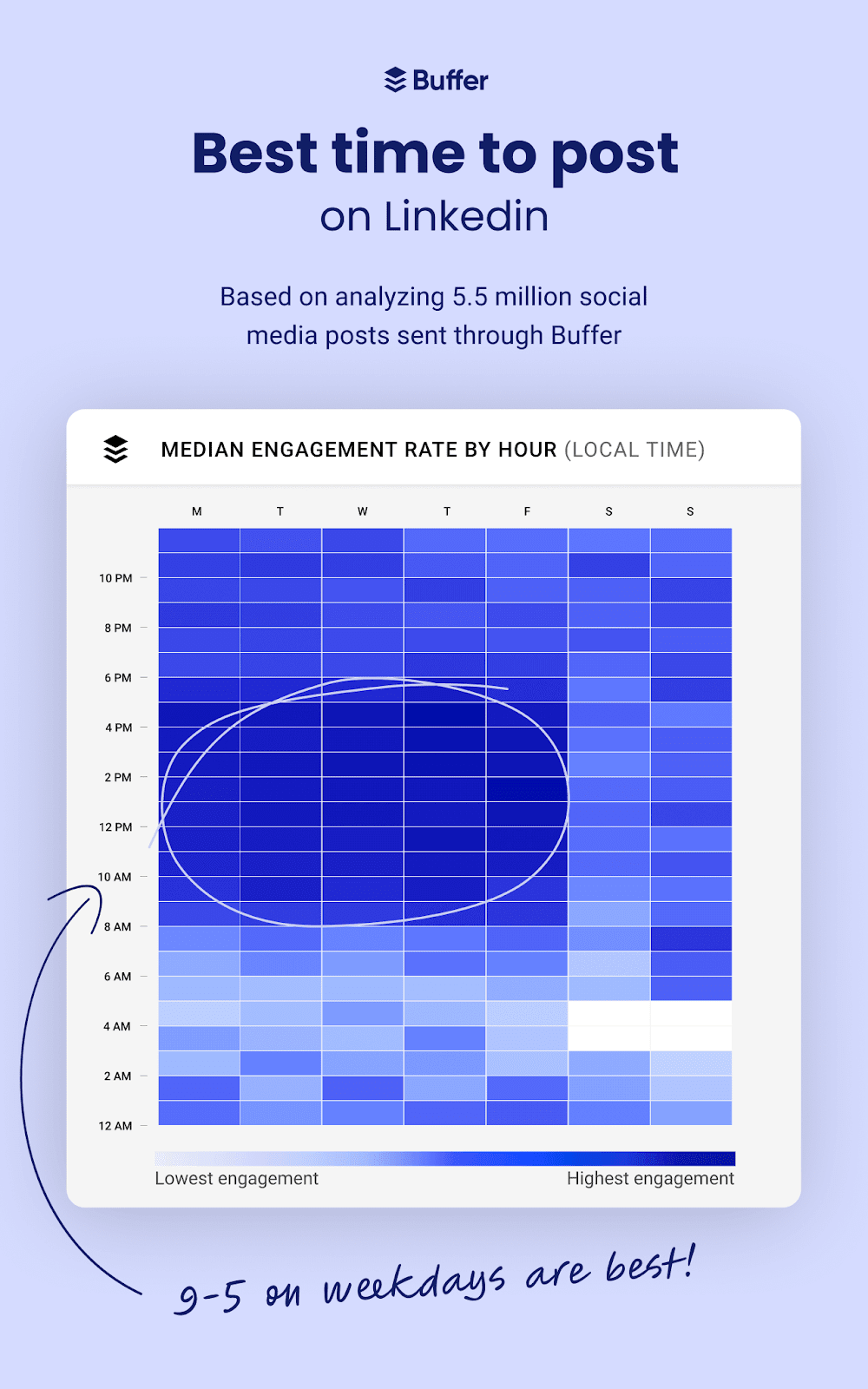
Now, let’s address the elephant in the room—those of us who get a “brilliant” idea to post at night. Sure, your content strategy might be stellar, but your readers are likely fast asleep at 2 AM (unless your niche is “insomniac CEOs” 🙂).
Obviously, your posting schedule should depend on the specific patterns of your target audience segments. LinkedIn analytics will help you identify when your posts perform best and refine your timing accordingly.
However, don’t set it and forget it. Consider monthly or quarterly posting times optimization to ensure they align with your evolving goals and audience habits. Marketing trends change, and so do engagement patterns—ensure your LinkedIn content strategy always stays one step ahead.
8. Use various ways for content distribution
Writing impeccable posts for LinkedIn is one thing, but making others see and engage with them requires additional effort. To distribute content effectively, you need a multifaceted approach.
Here are some of the best strategies I’d recommend to combine:
- Post from personal profiles. LinkedIn favors postings from individuals more than from company pages.
- Join LinkedIn Groups. Join industry-related groups, participate in discussions, build credibility, and share your posts with like-minded people.
- Try employee advocacy. Encourage your colleagues to share company postings, such as expertly crafted tips, customer success stories, studies, etc.
- Experiment with Sponsored Content ads. Paid promotions help you target ultra-specific audiences based on their demographics. This makes Sponsored Content a powerful tool for company branding.
- Collaborate with LinkedIn influencers. Partner with people who align with your business values and co-create articles, webinars, interviews, etc. Influencers have established trust and credibility, which makes their endorsement highly impactful.
In the final two chapters, we’ll explore the current posting trends. I’ll also share which posts work particularly well on LinkedIn and which no longer do.
Content to post on LinkedIn in 2025: types and examples
From thought leadership posts to interactive polls, let’s explore the most effective content types and real-world examples to help you boost engagement and grow your network.
Knowledge-sharing posts
These are absolute #1, as LinkedIn’s algorithms prioritize posts that impart knowledge and advice. Posts that provide actionable insights or industry expertise are more likely to expand your audience.
For example, K-Law media company regularly posts valuable marketing solutions for law firms on how to build their brand:
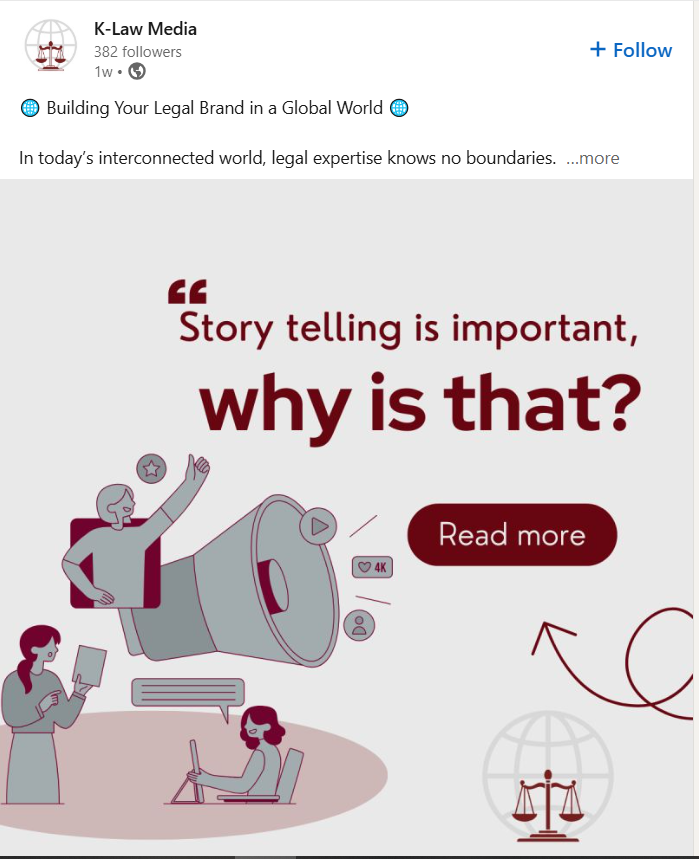
Interactive content
Such formats as polls, carousel posts, and videos encourage active engagement. They capture attention better than plain text, prompting LinkedIn users to interact with the brand more.
At Snov.io, we always share valuable videos as a part of our strategy:
Expert opinion articles
You probably know this prejudice that busy people have no time for long reads. Not really.
Articles that delve into industry trends and provide comprehensive analyses of some business phenomena can be top-performing indeed. LinkedIn now categorizes posts, assessing whether they contain opinions or advice. So, if you share your unique expertise, you may soon build a community of people who will reckon with you as a thought leader.
Colin Shaw successfully did this. Thanks to his unique expert knowledge, he has encouraged tens of thousands of LinkedIn users to read his postings.
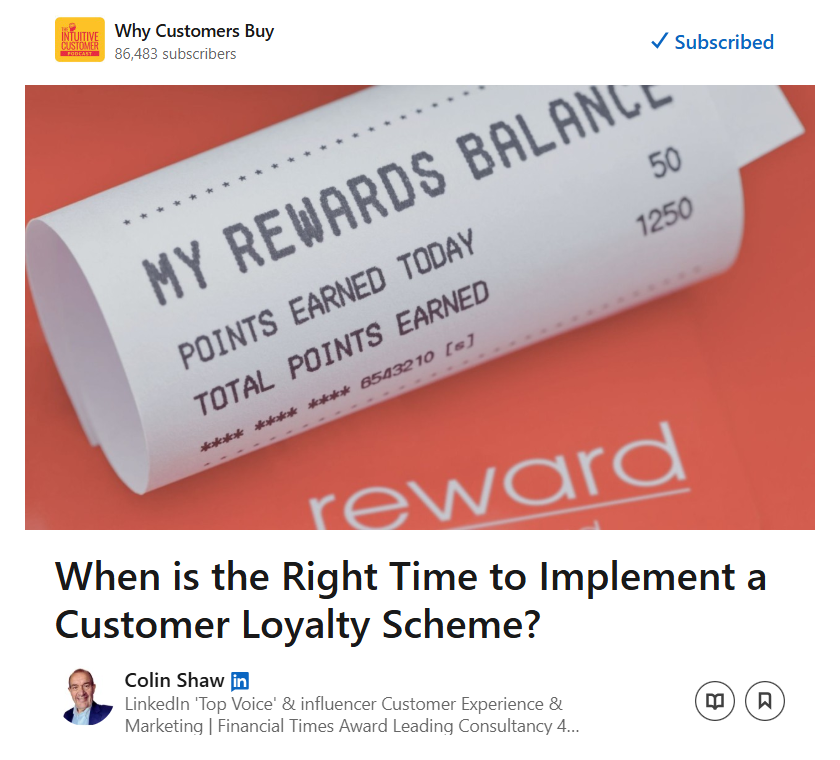
Personal stories
Authentic experiences related to professional growth can humanize your brand and widen your network of connections. LinkedIn rewards users who share personal goals, wins, or losses, prioritizing such posts over those offering generic, surface-level information.
Say you can use storytelling techniques to highlight how your solutions helped a client overcome a challenge. Or show how your customer comes back to you over time, like in this example below:
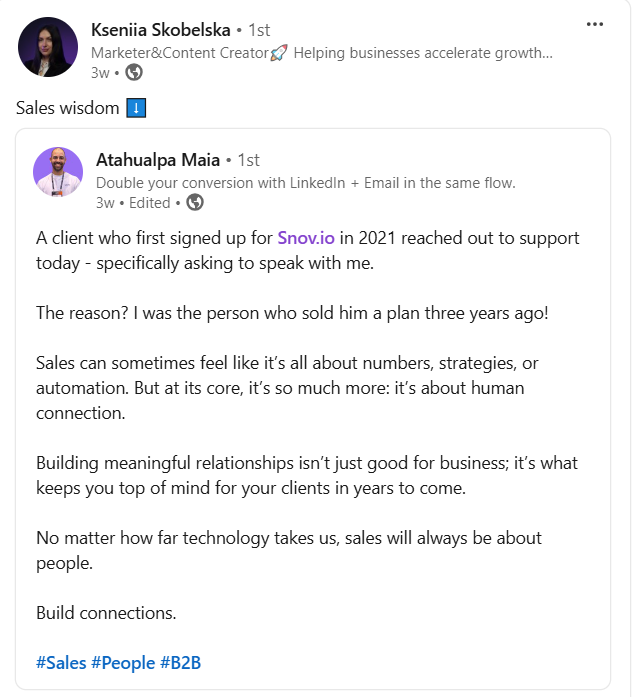

Social Selling On LinkedIn: A Step-By-Step Guide
November 7 2025
Industry-related jokes
Lighthearted and clever humor works really well if it’s relevant to your audience. Jokes about professional growth may humanize your profile and spark conversations.
Just take a look at the Christmas-themed example below. It’s hard to pass it by without leaving a comment, isn’t it?
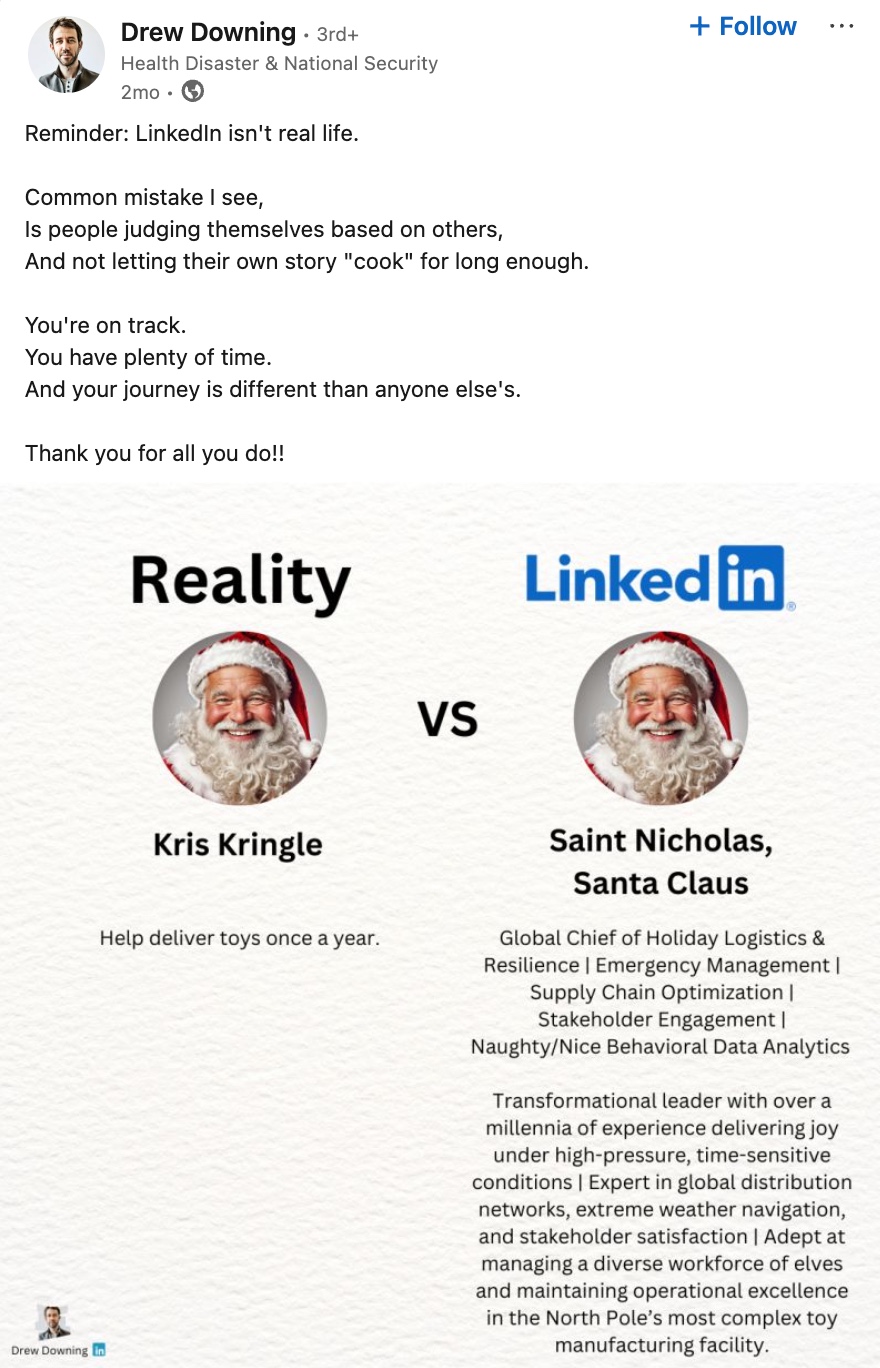
→ Read more about LinkedIn content strategy here. The article also includes inspiring content strategy examples!
Content you’d better avoid posting on LinkedIn in 2025
At last, below are the types of postings you should refrain from as they don’t work anymore and may harm your business strategy:
❌ Overly promotional material. LinkedIn’s algorithms deprioritize self-promo if they bring no real value. LinkedIn may hide these posts, leading to reduced reach. Your audience might not even see your updates, regardless of how frequently you post. So, you’d better focus on providing insights rather than direct sales pitches.
❌ Posts that are too personal. Though 1st-person professional stories work fine on LinkedIn, selfies, family photos, and other stuff that lack professional relevance are unwanted.
❌ Misaligned expertise. LinkedIn checks if your posts reflect your professional background. If they’re not, the platform’s algorithms may detect it and rank your content low. LinkedIn is punishing — take it. So, if you’re a graphic designer, for example, avoid posting recommendations on how to generate more B2B leads.
❌ Irrelevant ads. Even paid promotions can suffer if LinkedIn’s algorithms deem them irrelevant or unengaging. Your ads may not perform well, leading to wasted marketing budgets. As a result, it will be harder for you to rebuild engagement and trust with your audience, requiring significant effort to repair your content marketing strategy.
❌ Low-quality viral posts. LinkedIn no longer welcomes the sensational stuff that you think people will share. Its algorithms aim to reduce the spread of such material in favor of substantive posts. This also applies to frequent reposting without adding value or context.
Bottom line
In this guide, I’ve provided you with the best practices on how to create and promote your posts on this platform. So, if you want to enhance your professional presence and achieve success, a well-crafted LinkedIn content marketing strategy will help you do just that.
One of the key pillars of marketing success on LinkedIn is effective engagement with your target audience and influencers. Snov.io has designed its powerful LinkedIn Automation tool to streamline your LinkedIn interactions with influential people. Investigate its features and see how it evolves your LinkedIn content strategy today.
And if you want to learn how to automate your outreach on LinkedIn, don’t hesitate to try our course on LinkedIn automation. It’s absolutely free!

